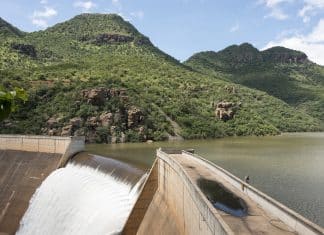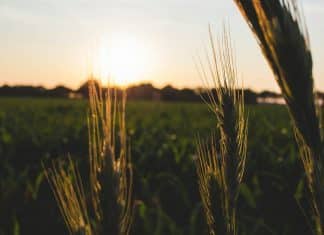Estimated reading time: 6 minutes
- It stands to reason that overnight pens must be clean and comfortable, with ample space for all the animals, so as to limit stress as far as possible.
- Throughout the slaughtering process, from the moment the animals arrive at the abattoir, until the slaughtered quarters are transported to retailers and butcheries, they make sure that the highest possible hygiene standards are maintained.
- Abattoirs are traditionally run in one of two ways. One is that the owner exclusively slaughters his own stock, as is the case with most abattoirs linked to large feedlots. The other is, that anabattoir slaughters for clients and makes a living by charging a slaughter fee, as was the case with the old municipal abattoirs.
- The slaughter process for pigs also requires more labour than in the case of the other species.
This process starts the moment the animals arrive by truck, and includes the way in which they are moved to the overnight pens and again the next day into the killing area. It stands to reason that overnight pens must be clean and comfortable, with ample space for all the animals, so as to limit stress as far as possible.
Throughout the slaughtering process, from the moment the animals arrive at the abattoir, until the slaughtered quarters are transported to retailers and butcheries, they make sure that the highest possible hygiene standards are maintained, says Connie van Niekerk, owner of the Standerton Abattoir. The abattoir is well-known for its high standards and for its innovative ways of dumping waste material.
Connie’s career started in the pig industry, when he was appointed by the Bantu Investment Corporation in Witsieshoek (QwaQwa) in 1975 to build a pig production unit. Eighteen months later Vleissentraal offered him a position as manager of the pig section at the Hurland feedlot in Magaliesburg. Three years later he was appointed general manager of the entire feedlot.
Read more about the role veterinarians play at an abattoir here.
Family characters
In 1997 the family split the business into individual parts and assigned a portion to each individual. Connie took to managing the abattoir and feedlot using personal funds. About 15 years ago his son, NJ, joined him in the business. “In 202my other son, Jaco, also joined us after having gained experience elsewhere and was appointed out abattoir manager. The result is that we are a family business once again. Last year my son-in-law, Lionell du Toit, also joined us and strengthened the family character even more.
“About ten years ago I also ventured into the butchery business with a partner who had experience in this field. We opened a butcher shop directly next to the abattoir.”
Eliminating the middleman
He says an adjoining butchery has various advantages. There is a direct link between the two operations, which saves on costs such as transport. And, most importantly, the so-called middleman is eliminated. Abattoirs are traditionally run in one of two ways. One is that the owner exclusively slaughters his own stock, as is the case with most abattoirs linked to large feedlots. The other is, that anabattoir slaughters for clients and makes a living by charging a slaughter fee, as was the case with the old municipal abattoirs. Connie found a good middle ground and slaughters for himself as well as for clients.
“Although we also slaughter for clients, the backbone of our business is to slaughter our own stock. These carcasses are then sold to large distributors such as supermarket chains. We sell the carcasses in quarters and don’t handle any further processing.” The so-called fifth quarter, which refers to the offal and the skin, forms an important part of the slaughter process, and the price one can get for this, says Connie, determines to what extent one can subsidise the rest of the carcass.
Read more about the benefits of the beef carcass contracts here.
Cattle, sheep and pigs
The Standerton Abattoir is geared to slaughter cattle, sheep and pigs with a specially equipped separate line for each species. Whereas the skins are, for example, removed from cattle and sheep carcasses, a special tub with boiling water is necessary to soak pigs after they have been killed so the hair can be removed easily. The slaughter process for pigs also requires more labour than in the case of the other species.
“In all three species, the animal is first stunned using a captive bolt. The throat is then slit and the animal is bled out.” In the past Connie used to regularly purchase animals at auctions, but he stopped this practice. “I have built up such a good relationship with farmers in the area over the years, that they are supplying me with enough animals to meet my demand. Because of the reliable and constant flow of animals, it became unnecessary to continue operating the feedlot, so we sold Rooikoppen. The risks involved in feeding animals are high, mostly because you have no control over the price of feed or, at the other end of the spectrum, the price of the carcass. Buying directly from farmers provides us with much more control over profit margins and cash flow.”
Read more about biosecurity methods in pig production here.
Handling waste
Initially the Standerton Municipality provided a service that removed all waste material from the abattoir, but when that service was abandoned, Connie had to construct an innovative plan to solve the problem of waste accumulation. “We started composting the manure to sell in bags. The demand for this organic fertiliser has grown to such an extent that it now represents a sizeable income for the business. We managed to turn something that could have been a major obstacle, into an asset.”
Although it has not yet been implemented, Connie plans to also process the other forms of waste, such as the blood and organs, into organic fertiliser through the process of hydrolysis. “This is an expensive process, but I believe the end product will be able to cover more than the cost. In any event, I believe it to be a much better alternative than having to remove the waste at our own cost.”
Hygiene is key
Inside the abattoir one immediately notices the complete lack of odours and very few flies. “To me that characteristic abattoir smell is the telltale sign of a lack of hygiene and we go to great lengths to prevent this. Such a smell sticks to the meat and without a doubt influences the quality.
“Flies, on the other hand, remain a constant challenge, but we maintain rigorous standards to limit them to a minimum. The whole plant is washed and disinfected daily. The abattoir is cleaned every evening and we start each day in a clean environment.”
The workers have to wash their hands and instruments, as well as their aprons, regularly so that there is no opportunity for filth to build up. As far as possible, carcasses are handled with hooks only, and manual handling is avoided. Connie also believes it has an influence on the meat’s quality and shelf life. The plant has the capacity to slaughter 60 units per day. One unit is equal to one bovine, three pigs or six sheep. – Izak Hofmeyr, Plaas Media
For more information, call Connie van Niekerk on 082 824 2081.








